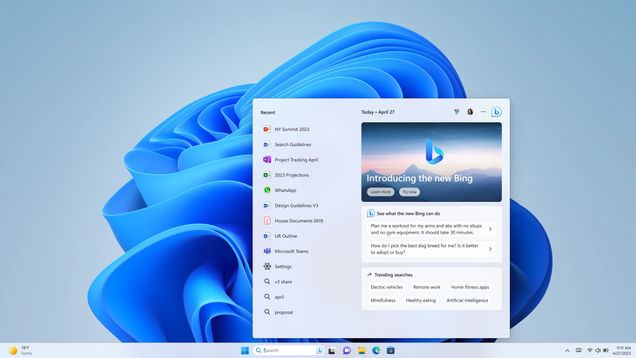A smarthome promises freedom from wall switches and pull chains. Instead, you get voice control and powerful automation. That’s how it works for smart light bulbs, anyway. Why not make your home’s ceiling fans smart, too?
Smart fans are another great convenience for the home. With a connected fan, not only do you gain voice and remote control, but you can also add schedules and routines. You can add smart fans to your home in several ways: install a new one, convert an existing “dumb” fan, install a smart fan switch, or add a smart bridge for fans.
The Expensive Option: Buy a New Smart Fan

If you want a fan that integrates easily into your existing smarthome system, installing a new smart fan is the easiest option. Smart fans typically come in either a Wi-Fi or Zigbee format. If you choose a Wi-Fi fan, like those from Hunter or Haiku, you won’t need a hub.
You still typically get a standard Infrared (IR) remote control, plus access through a smartphone or tablet app. Wi-Fi fans usually offer Alexa and Google Assistant integration, with voice control of both the integrated lights and the fan. You’ll need to install a dedicated app on your smartphone or tablet. And, of course, you run the risk of interference if you have too many Wi-Fi devices on your network.
ZigBee fans, however, do require a smart hub. The most prevalent offerings, from Gardiner and Hampton Bay, are designed specifically for Wink hubs. If you have multiple ZigBee smart home devices, they’ll form a mesh network with the ZigBee fan for better range. Unfortunately, while they do have Alexa and Google Assistant integration, that doesn’t usually include voice control of the fan—the voice assistants can only turn the integrated light on and off.
If you’ve installed a fan with an IR remote before, installing a smart fan follows the same process. You wire in an IR module that also includes either Wi-Fi or ZigBee radios as you install the fan.
The biggest drawback—besides having to install the fans—is the expense. Smart fans range from $130 to $640. It also introduces an additional point of failure—our smart fan’s ZigBee radio failed after four months, and neither the manufacturer nor the store wanted to fix it. The fan still works but as a standard dumb fan.
Turn Your Current “Dumb” Fan Into a Smart Fan

If you don’t want to buy all new fans, it might be possible to convert those you already have. If your fan already has an IR module, you could replace it with an adapter with Wi-Fi or Zigbee radios.
You’ll run into the same positives and negatives you would with a genuine Wi-Fi or Zigbee fan. The ZigBee Wink controller still doesn’t allow your voice assistant to control the fan speeds, for instance. But at $50 to $70, adding the radios to your existing fan is far less expensive than buying an entirely new fan.













